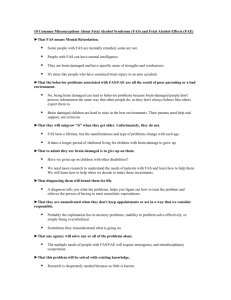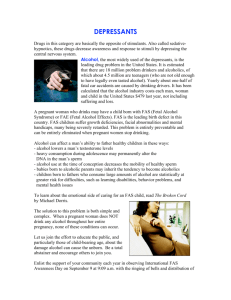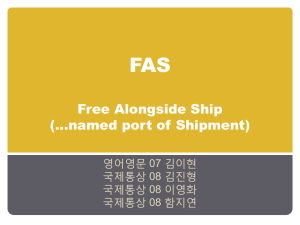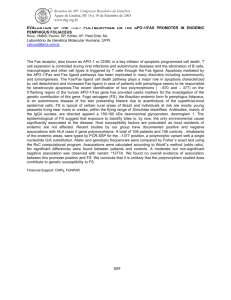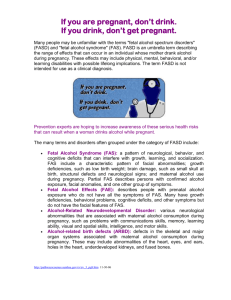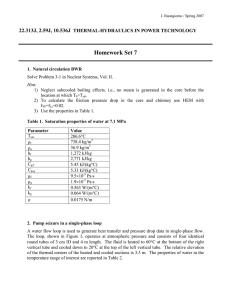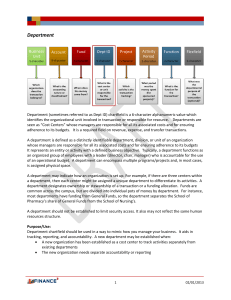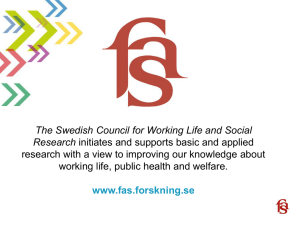07_FAS_2015_PEMPAL_PM_Gurashvili
advertisement
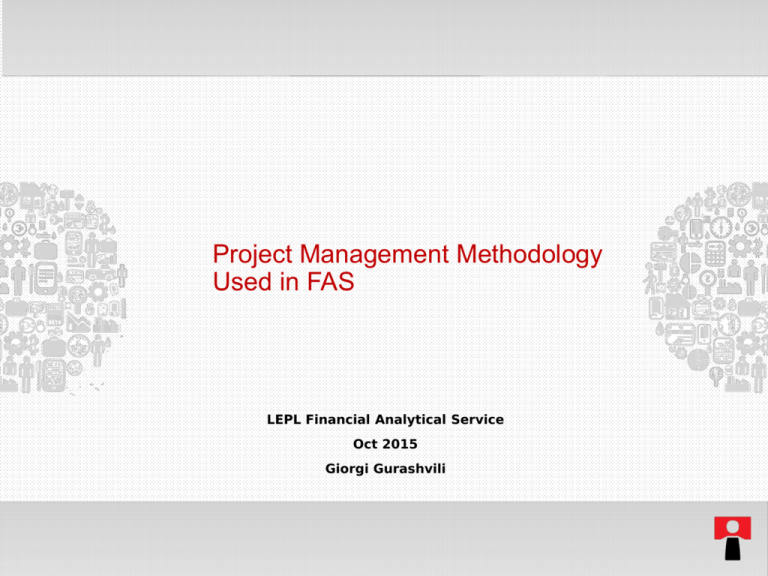
Project Management Methodology Used in FAS LEPL Financial Analytical Service Oct 2015 Giorgi Gurashvili Agenda Overview of Project Management Frameworks Used By FAS Overview of FAS Project Management Methodology Benefits Received Questions What is Project Management A temporary organization that is created for the purpose of delivering one or more business products according to an agreed Business Case Change Temporary Cross - Functional Unique Uncertainty Aim of Project Management Frameworks Used By FAS MSF (Microsoft Solution Framework) for Agile PRINCE2 ITIL SABSA (Sherwood Applied Business Security Architecture) MOF (Microsoft Operations Framework) RUP (Rational Unified Process) Roles Project Manager (PM) Control project timelines Define priority of the tasks Approve design packages Product Manager Ensure solution delivers business value Define the solution within project constraints Ensure customers’ needs and expectations are satisfied Roles System Analyst Design a solution to meet business goals within project constraints Perform risk and security analysis Prepare test case scenarios Development Team Leader Delegate tasks received by product manager on team members Code version control Smooth deployment and transition to operations Operations Manager Organize trainings of end users needed for the launch of solution Ensure smooth operation of the solution Solution Design Approval by Business Initiation PM Sends User Story via communication channel Requirements Capture User story is discussed with stakeholders of the system Design Package User story is decomposed and solution design created Request for Approval Design package is sent to PM via communication channel Approval PM approves the design package via communication channel Design Package Standardized design package template based on best practices of ITIL and PRINCE2 Comprehensive description of solution to minimize ambiguity between business and IT Current state of business Change to business as usual after the implementation of the solution Affected users Functional requirements and detailed process description Non–Functional requirements Implementation timeline Required test case scenarios Requirements for successful launch Process - Overview Governance Track - Balancing efficient and effective use of project resources and delivery of a solution Enactment Tracks - Detailed sequence of steps by which a solution is defined, built, and deployed Process - Enactment Tracks Envision - Develop a clear understanding of what is needed Plan - Evolve the conceptual solution into tangible design Build - Build the various aspects of a solution in accordance with Plan Stabilize – V&V (Verification and Validation) Deploy – Integrate a solution successfully into production Process – FAS Approach to Application Lifecycle Management Management Frameworks › › Software Architecture › Coding Activities › Software Testing › Continuous Integration › Release Management Software Maintenance Change Management RUP Requirements Management › PRINCE2 Project Management ITIL › › MSF ALM Toolset FAS uses Microsoft Solution Framework for Agile Development & IBM Rational Unified Process as a core Software Development Framework. FAS uses ITIL & PRINCE2 as a core infrastructure and process management framework FAS has developed custom strict management process implementation FAS has developed official internal manual, that covers all activities, concerning software development and tools usage Benefits Received Agility to adapt to changes Incremental approach to ensure fast value delivery with minimal risks and recourses Make sure what is delivered has optimal value to business Minimization of launch failures / Minimal room for errors Frequent delivery of business value Business involvement on all stages of the project Continuous learning Clearly established accountability and shared responsibility Thank You For Attention

